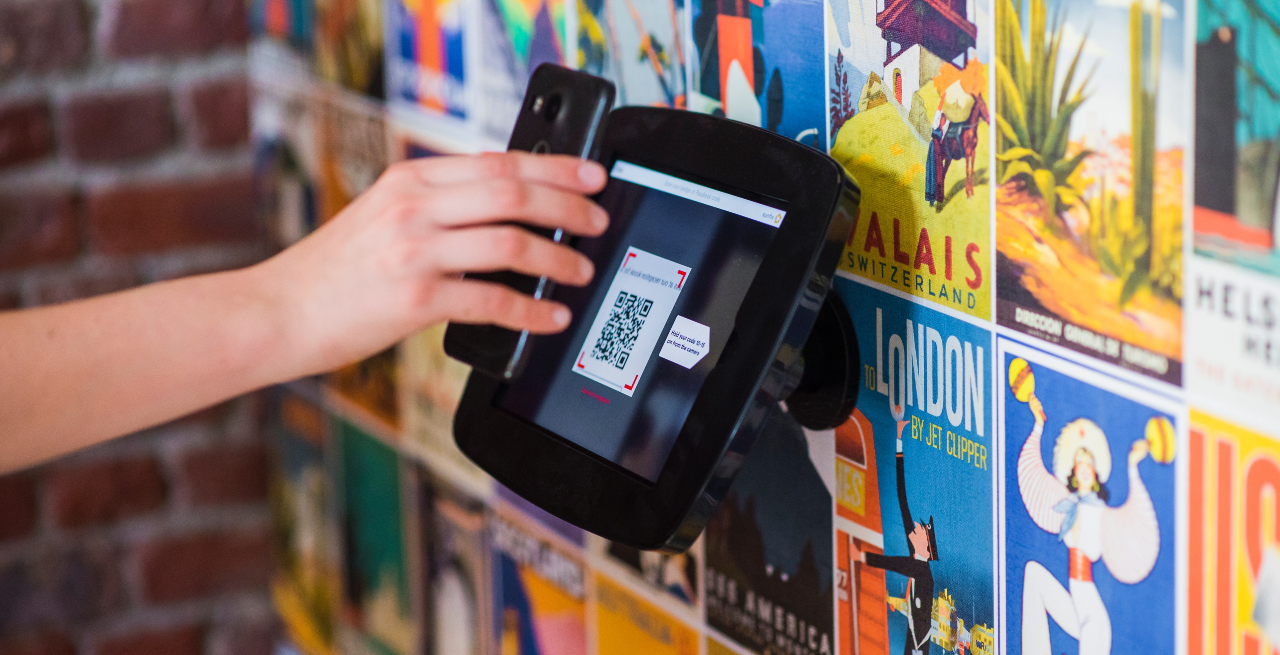MRM EXCLUSIVE: QR Codes – How to Use Them Responsibly in Hospitality
3 Min Read By Grant Gibson
QR codes are an invention of the 1990s, a fad during the rise of smartphones and now one of the ultimate comebacks of the tech world. The quick response code, or QR code, hit the U.S. mainstream public in 2010 when smartphones solidified their fame and were beginning to launch QR code readers on their platforms. During this time, millions of Americans scanned these matrix barcodes on their mobile devices, as they were featured on business cards, billboards, trade show booths, movie posters, and a variety of advertisements spanning all industries. To the masses, QR codes rose to fame quickly before crashing and burning soon after.
Fast forward to 2020, a year when the world was forever changed by the COVID-19 pandemic. For the QR code, this was an invitation to make a resurgence, and this time, for good. The hospitality industry served as the launch pad for the revival of the two-dimensional barcode, and now restaurants of all sizes are relying on this method to keep operations booming in a contactless world. In fact, according to link management service Bitly, QR code downloads increased by 750% over an 18-month period starting in 2021.
Not only are restaurants using this touchless service to eliminate menu sharing, but QR codes have opened up a world for better understanding customer insights through data analytics, moving the hospitality sector further into the digital age. As always, with the benefits of digital tools comes risks. As hospitality professionals reap the rewards of QR code implementation, they must be on guard against cyber attacks which can put their reputation and customer trust on the line.
Here are a few ways to ensure QR codes are used responsibility in hospitality:
Cybercriminals use QR codes in two basic types of attacks. First, users must beware of a user-based QR code phishing attack, also known as “quishing.” Hackers use QR codes to entice victims to a malicious website, which is similar to any other phishing website that lures people to share bank details, social security numbers and other sensitive information. Second, cybercriminals utilize something called QRLjacking to trick users into scanning a different QR code than the one provided by the restaurant or service provider. This code sends the device to a URL that infects the phone with malware.
Protect Your QR Code Advertisements
Typically, users have been warned of cybercriminals attacking through phishing emails, and many have learned of the red flags and telltale signs to spot within the text, such as misspellings. QR codes are tricky, because they do not display any signals as to whether the code is legitimate or not. Restaurant owners and staff should be cautious of how accessible their QR codes are to hackers, since an attacker could easily replace a business’s QR code with a malicious QR code sticker.
Communicate What Data Is Being Collected
With popular web browsers phasing out third-party cookies, people are becoming more conscious of their data-sharing privacy. With that, the hospitality industry may use QR codes to collect first-party data to improve customer experience. For instance, a hotel might post QR codes in elevators and lobbies leading you to a website with activity recommendations. Next time you visit, the website remembers you and prompts you with activities based on your previous search. While this offers personalized service, hospitality companies should disclose when and why data is collected.
Encourage Customers to Use Their Smartphone Cameras
This tip might seem simple, but it’s an important step in preventing cyber attacks. Scammers have been known to create fake QR code scanning apps that install malware when downloaded. When promoting QR codes in a restaurant, be sure to encourage customers to only use their device’s camera and never prompt them to download a scanner app.
QR codes have become a permanent fixture in the world of hospitality and have not only mitigated the need to disinfect menus, but they offer a window into customer behaviors to enhance the overall user experience. As restaurants and other service providers continue displaying their matrix barcodes everywhere from tabletops to email campaigns, it’s crucial to do a security check to ensure QR codes are being used responsibly.
Just earlier this year, the FBI issued a public service announcement regarding the cybercriminal activity with QR codes. Although the risk is clear, with a little education, protection, communication and customer guidance, the hospitality industry can continue to thrive in the digital age with the implementation of QR codes.


